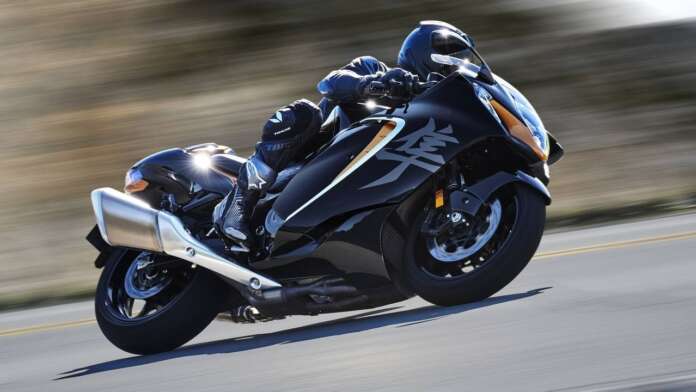This article will teach you about several bike types as well as some basic examples. Riding a motorcycle is an exciting experience. However, just as there are many sorts of cars, there are various types of motorbikes that people love riding for various reasons. Others are designed to look attractive and catch people’s attention, while others are designed to be functional and have various purposes.
Motorcycles were much easier to understand 50 years ago. Learner bikes were similar but smaller, all road bikes looked like 5-year-olds could carry them, off-road bikes had knobby tires, and sidecar outfits were similar but had a small caravan attached by tent poles. Everything is considerably more complicated nowadays.
Different Types of Bikes
It’s not fair to attribute everything to either design or thrill because there have been so many motorbike design combinations. The various combinations deserve to be considered as a whole. So, here’s a list of some of the most popular motorcycles in the world.
Some bikes are designed solely for racing, while others are designed to wow bystanders. They’re all famous for a reason, and we’ll take a look at some of their design and appeal in this article.
You must know what you’re getting because there are so many different motorcycles. Here is a list of several motorcycles, their roles, and how they are commonly utilized.
1# Standard Bikes
Standard bikes are popular because they are simple to operate and come in a range of forms. It is available in 125cc to 1,000cc displacements and can be customized with luggage, a tank bag, and a different seat, making it a good first and all-around motorbike. It usually lacks a big front fairing, if one exists at all.
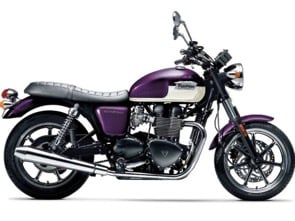
Because it isn’t overly forward-leaning or backward-reclining, the ergonomics are quite neutral. Seat height is often lower in the centre, allowing almost everyone to sit comfortably.
Examples of standard bikes
The Yamaha SR400 is an excellent all-around city motorcycle. It’s not too huge for a beginner but not too little for an experienced rider.
2# Off-road motorbikes
Off-road motorcycles do exactly what they say: they’re built to go where no man has gone before. They have higher seat heights to allow them to pass through denser brush and higher suspension to handle a few bumps. They’ll be trailered to the weekend riding area because they don’t have lights or turn signals.
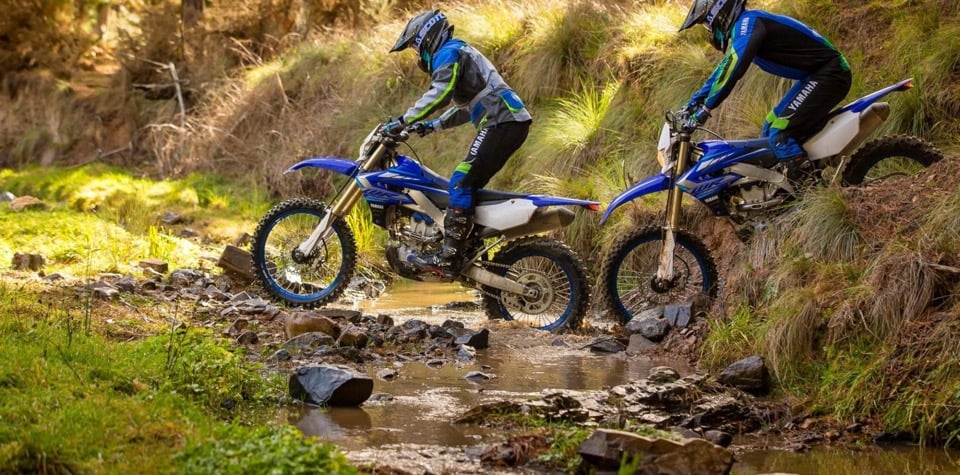
The majority of them are light and ready to spend the entire weekend on the back trails. Kawasaki has a strong off-road motorcycle portfolio that is reasonably priced. The KLX110 has a 4-speed transmission with a clutch-less design that allows for easy ascending steep slopes to see the beauty all weekend long.
Examples of off-road bikes
Some manufacturers, such as BMW and Honda, provide more off-road-oriented models, such as the BMW R1250GS Adventure and Honda Africa Twin Adventure Sports, which are designed for true off-road adventures. They frequently have significantly larger petrol tanks, more crash protection, longer suspension travel, and some of the highest seats on the market.
3# Mopeds Bikes
Because the original 1950s description was a bike with an engine and pedals for starting and assistance on steep slopes, the term ‘moped’ combines the words’ mo’ for motor and ‘ped’ for pedal. The engine displacement was limited to less than 50cc, and the top speed was limited to 30 miles per hour.
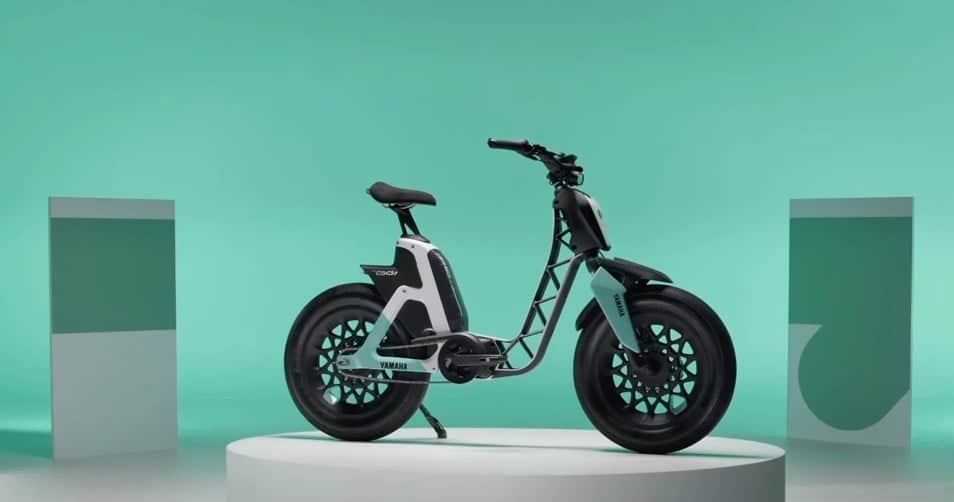
Pedals are no longer necessary; engine capacity and speed limitations remain. A modern moped has an engine less than 50cc (usually 49cc) and a top speed of 30 miles per hour. However, due to these restrictions, a moped can only be ridden by 16-year-olds, making it the only alternative for riders who need to go on the road right away.
Because scooters make up the majority of today’s 50cc mopeds, they have a basic automatic transmission, small wheels, a step-through chassis, and full bodywork. On the other hand, several ‘authentic’ 50cc motorcycles have manual transmissions and classic chassis layouts.
Examples of Mopeds
Peugeot Kisbee 50, Honda Vision 50
4# Scooter
Between the wars, the motor scooter appeared, combining basic motorcycle dynamics with a slick aesthetic and more accessible ergonomic design. Thanks to leg shields, footboards, and a step-through frame design, commuters could ride to work without getting dirty. Simultaneously, an enclosed engine and automatic (or semi-automatic) transmission simplified matters.
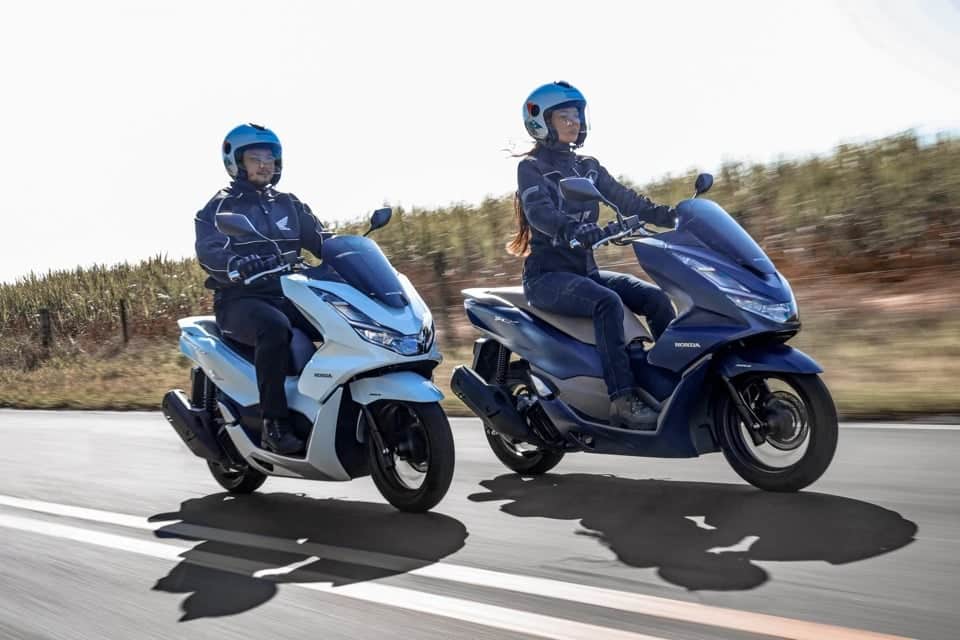
Modern scooters still have these important parts, but they also have a large storage space under the seat, a slim motor that uses less gas, and safety features like ABS or brakes that are built into the wheels. Millions of riders worldwide depend on reliable, affordable, and easy-to-use high-end options like Yamaha’s XMAX series or scooters from Piaggio and Vespa.
Examples of Scooters
Piaggio, Vespa, Yamaha, Peugeot
5# Maxiscooter Bikes
The maxi-scooter is a fairly new invention. The first big-bore scooters came out around the turn of the century. However, they’ve taken off in a big way since then, especially in continental Europe, where they sell like hotcakes.
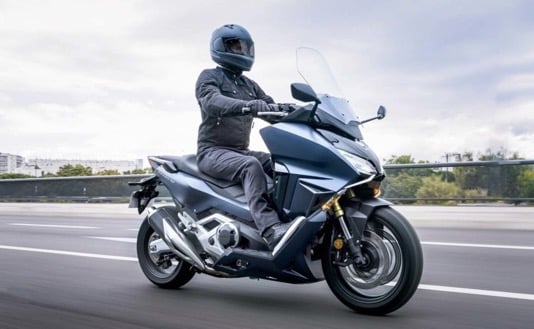
The idea is simple: take the convenience, weather protection, ease of use, and practicality of a compact, 125-200cc automatic scooter and upgrade it with a 400cc+ engine and corresponding chassis improvements.
With a larger set of bodywork, you get all the benefits of smaller scooters but with three-figure top speeds and the potential to go much greater distances on roads. This means that 50-mile commutes and two-up road trips are feasible.
Examples of Maxi Scooters
Yamaha T-Max, Suzuki Burgman, Honda Silver Wing
6# Sport Touring Bikes
Most sport tourers, like the Kawasaki Z1000SX, are just slightly modified high-end sports bikes. However, some, like the Honda VFR800, are made for the job. They’re designed to have the same characteristics as touring bikes without compromising any of the sportiness, so they’re lighter and corner better, but aren’t as comfortable.
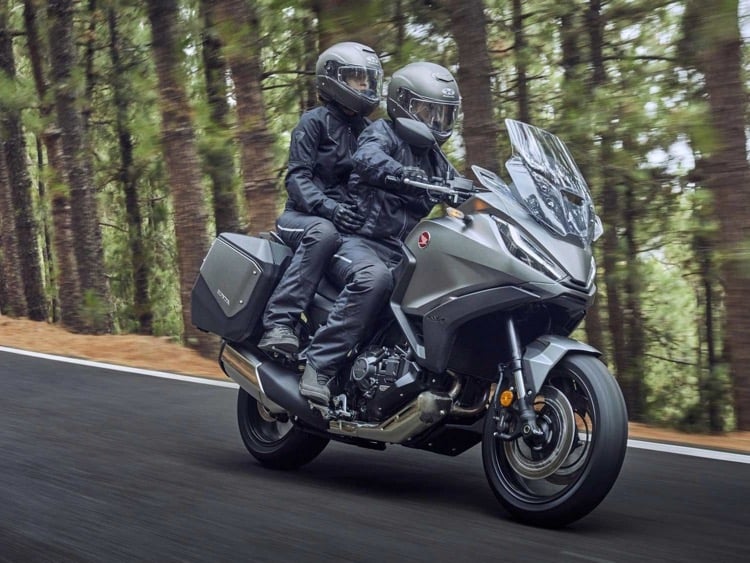
Sport Touring motorcycles, as their name suggests, are a good mix of sport and touring motorcycles. They usually have a higher seat height than a Touring motorbike and better luggage options for lugging extra items on longer excursions than Sport motorcycles. They’re good at mixing both modes, and with the correct gear, they can do it all, from quick outings with friends to longer road trips you’ve been considering.
Engine sizes are typically in the middle of the spectrum compared to some of the larger options. Simply use your best judgment to determine the best size that suits your riding style. The Concours14 ABS is a superb Sport Touring motorbike from Kawasaki. It can contain a lot of extra gear and allow you to log a lot of miles throughout a long weekend. The engine is slightly larger to provide more power for cruising the country’s highways.
Examples of Sports Tourer Motorcycles
Honda VFR800, Triumph Sprint ST, Ducati ST4, Yamaha FJR1300, BMW S1000 XR, Ducati Multistrada, KTM Super Adventure
7# Touring Bikes
Traditionally, a touring bike is a big, heavy motorcycle with a big engine, a body that covers the rider and passenger, a lot of space for luggage, and comfortable seats for the rider and passenger. BMW’s K1600 LT, Honda’s Gold Wing, and Harley-Davidson’s Glide all fit into this category. Yamaha’s FJR1300, Honda’s Pan European, and Triumph’s Trophy 1200 offer a similar combination in a slightly smaller package.
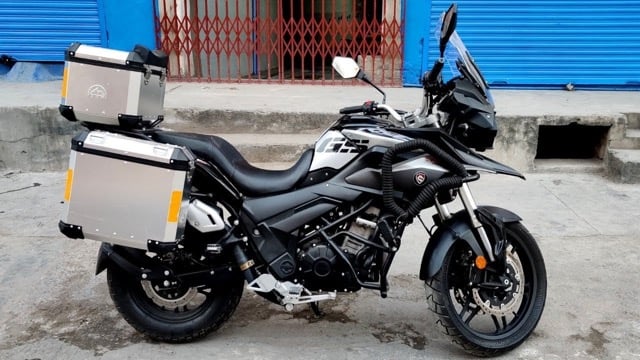
On larger “supertourers,” standard features include sound systems, built-in hard luggage, reverse gear, aid-adjustable suspension, built-in intercoms, and grips and seats that are heated by electricity. Massive six-cylinder engines, shaft drive, and incredibly smooth operation are all features of the K1600 and Gold Wing’s six-cylinder engines (a flat-six on the Honda and an inline-six on the BMW).
The smaller tourers offer a more dynamic and agile riding experience, even if they are still strong bikes. The Pan European and the FHR1300 are both superb mid-distance commuters and continent-crossing touring behemoths because they are on the edge of sport-touring levels of handling and speed.
Adventure bikes have recently gained popularity over pure touring bikes like sport-touring bikes. The largest models here are the BMW R1250 GS, Triumph Tiger 1200, and KTM Super Adventure 1290, and they all have the power and acceleration to send two persons and a bag of luggage across Europe in a few days. However, because electronics are so small, they may also provide a lot of luxury. Now, color LCD dashboards, built-in GPS, heated seats and grips, and a windscreen that can be adjusted are all standard. They are competitive with nearly anything in the full touring class.
Examples
BMW R1250 GS, Triumph Tiger 1200, KTM Super Adventure 1290, Honda Gold Wing
EU ENVIRONMENT COMMISSION: YES TO STOP PETROL AND DIESEL ENGINES IN 2035
8# Sport Bikes
One goal of sports motorcycles is to travel from point A to point B as soon as feasible. They achieve this by gaining power while losing weight, ideally gaining 1bhp for every kg lost. They also have the best lean angle for cornering as rapidly as possible, a full aerodynamic fairing, a low, aggressive riding position, and advanced technology. The most expensive bikes are often based on the current MotoGP race bike of the manufacturer.
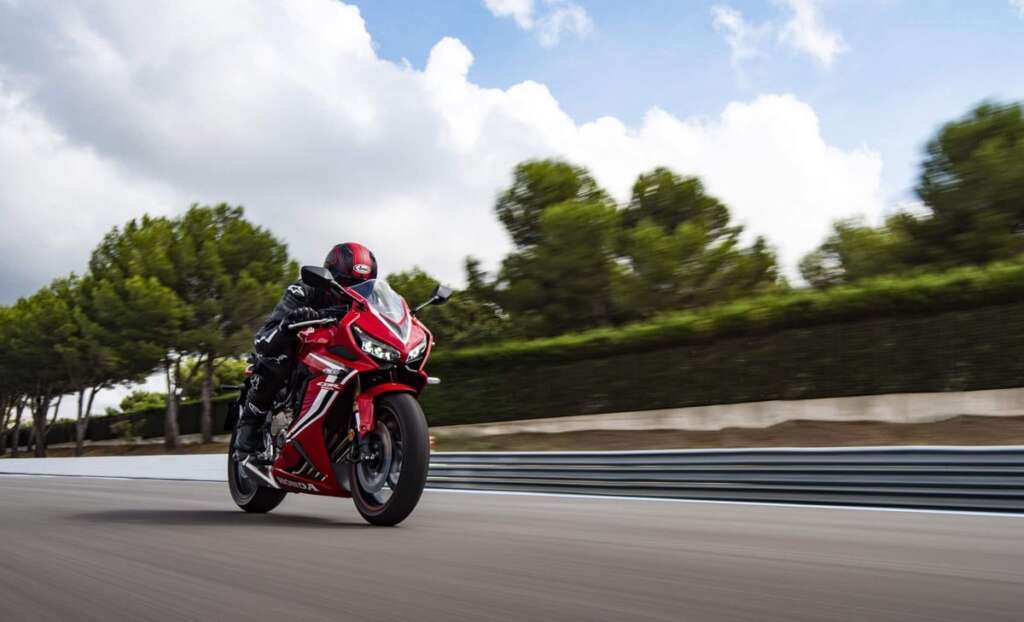
Since they aren’t as cozy, pillion-friendly, inexpensive, or useful for everyday riding, their sales have recently declined. If you only have one bike, an adventure or sport touring model makes more sense, especially if you won’t be taking it anywhere near a track. In the middle size range, which is about 600cc, only the beautiful Yamaha R6 is still a good option.
Examples of Sports bikes Motorcycles
Ducati Panigale V4, BMW S1000RR, Kawasaki ZX-10R
9# Cruiser Bikes
The cruiser, also referred to as a chopper, got its name since it was designed with the idea of cruising in mind. It usually has a lower seat height, which makes it a great “cruising” motorcycle for getting around town. With a little extra luggage, it can also be used as a weekend rider. Depending on the brand, engine displacement might be as small as a minuscule engine or as large as 1,000cc or more. It’s a great option for both novice and seasoned riders, even though it could feel more like you’re sitting in a cruiser than riding one.
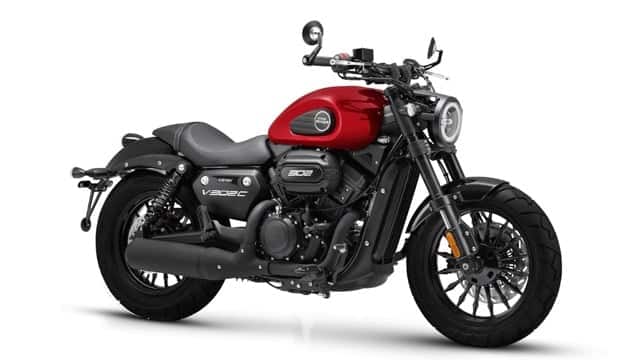
If you think of a cruiser, Harley-Davidson may be the first name that comes to mind (particularly a chopper). We suggest the H-D Low Rider as a good example of a cruiser. It is a low-slung motorcycle with plenty of extras that can go for miles, making it perfect for a quick trip or a fun weekend on the road.
Examples of Cruiser Motorcycles
Harley-Davidson Sportster/Big Twin, Triumph Rocket III, Yamaha V-Max.
10# Adventure Bikes
Adventure bikes have long-travel suspension, a respectable-sized screen, a high seat height, plenty of space for baggage, an available wire-spoked wheel choice, and adequate drop protection. Although it will be challenging to transport a big, heavy bike off-road, they desire maximum capabilities, range, and the occasional light off-road/dirt track adventure. In earlier definitions, they were also referred to as dual-purpose, dual-sport, and on/off-road motorcycles.
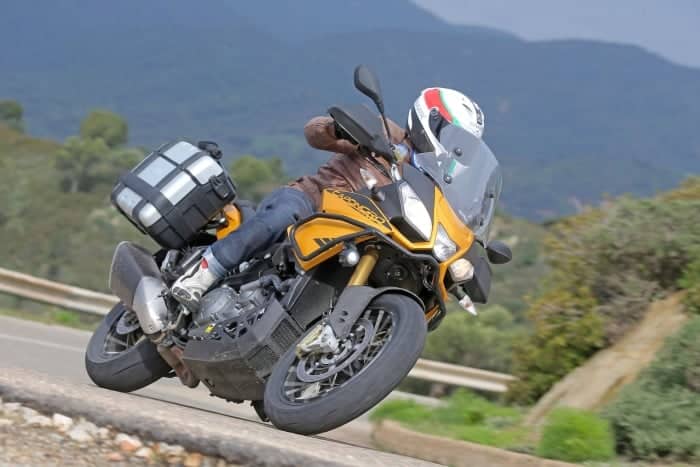
Because they are so good at commuting, touring, and sports, and, more recently, appearing nice, the bikes frequently replace other types of bikes, especially sports bikes, with their aggressive and uncomfortable geometry. From single cylinders to various twins and triples to inline and V-engined fours, you can buy adventure bikes with just about any sort of engine.
Good low-down running and powerful midrange oomph are crucial for off-road riding, but most contemporary adventure bikes also come with a respectable amount of top-end power. The same is true of adventure bike brakes; the minimal requirements aren’t great, but you’ll never be moving quickly enough to need a lot of stopping power on real off-road trips. New machines also boast remarkable braking performance numbers.
Examples
BMW R1250 GS, Honda Africa Twin, Suzuki V-Strom, KTM Super Adventure
11# Bobber Bikes
The term “bobber” is one that has its roots in American culture. The phrase “cut” or “trim,” as in a bob-tail animal or a bob haircut, is where the word “bob” in “bobber” comes from. The large, traditional American cruiser’s back end has bobbed in the motorcycle world. The bodywork, back fender, brackets, luggage, and front mudguard are all removed. The motorcycle is lighter and more maneuverable as a result.
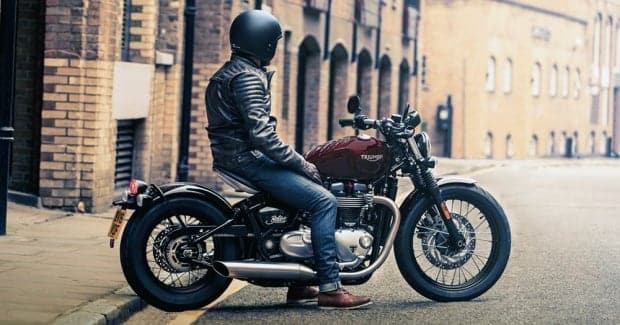
Today, a bobber can be a brand-new standard model built on a vintage bike and delivered with a bobbed look straight from the manufacturer.
The Bonneville Bobber is one of the Triumph company’s most well-known bikes in recent years. It appeals to people since it is simple to ride and to the eye. Other models, like Yamaha’s XV950, are less well-known, but since customization is the key to a bobber, you should certainly make your own.
Examples of Bobber Motorcycles
Triumph Bonneville Bobber, Yamaha XV950
12# Chopper Bikes
It’s an iconic American tradition, perhaps best embodied by the Easy Rider movement’s motorcycles. Peter Fonda’s bike from the movie Captain America is an extreme variation. Still, it shows what matters: a very long front fork, a booted wheel that is far out, a small front tire, and looping “apehanger” handlebars.
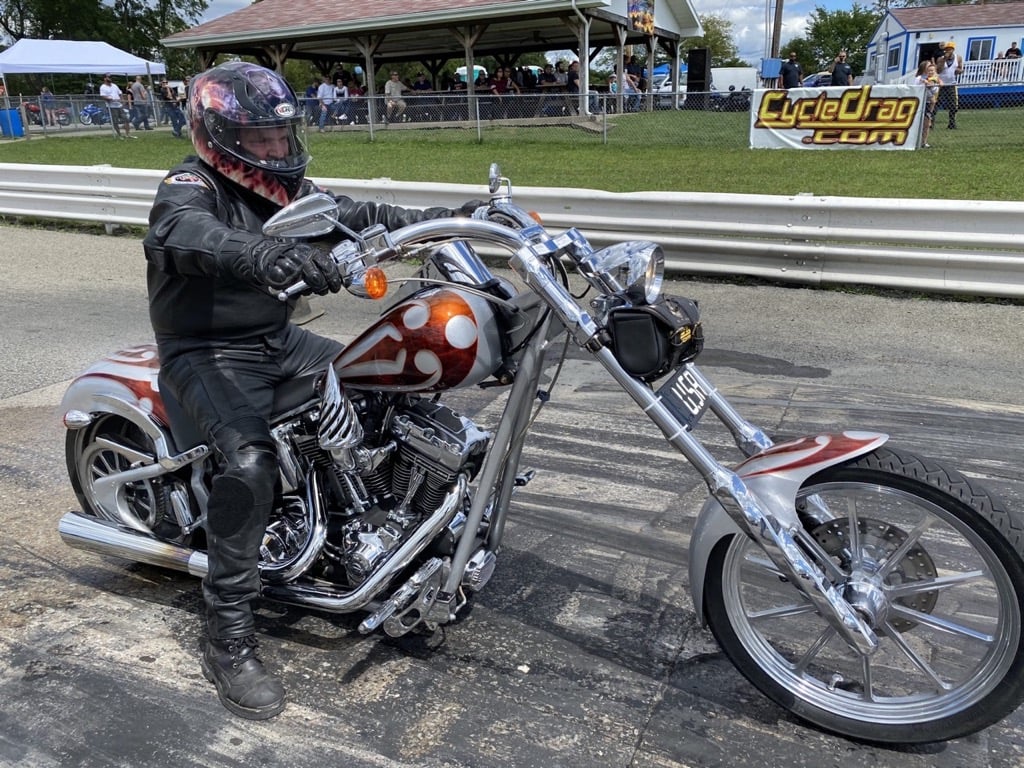
The front brake is absent, and there is no back suspension in instead of a “hardtail” chassis. Although choppers can use any big-bore motor, an American V-Twin is the most popular. The engine is a Harley-Davidson V-Twin. Harley-Davidson can still make a simple chopper-style motorcycle that looks good and works well, as shown by the current Breakout model or the Low Rider Softail variations. But you’ll have to make your own if you want a really potent dose of chopper-style!
Examples of Chopper Motorcycles
Harley-Davidson Breakout, Harley-Davidson Low Rider Softail
13# Street (Crotch Rocket)
One of the most well-known bikes in the world is the adventure bike. It screams adventure and is built to travel the world’s shortest routes and most dangerous terrains. Whether they are made for speed or rough terrain, adventure bikes are made to take a beating.
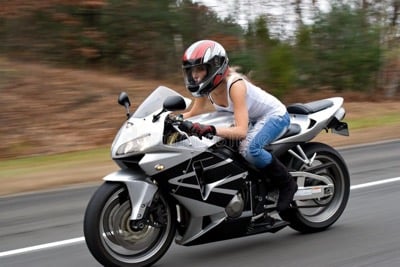
They can tolerate a lot of resistance, as well as a lot of bumps and leaps, before being sent packing. They appear to be a dirt bike made to take a lot of abuse and a vintage bike made for foreign travel. You may possibly get the best of both worlds with these motorcycles.
Another type of adventure bike is the dual-sport bike. This bike has extra features like bright lights and loud horns that can help you get through late-night traffic. Additionally, it has a severe off-road suspension. It can have extra bags for a camping trip and a higher seat to make riding easier on back roads.
14# Café Racer Bikes
The term “café racer” describes the truck stops, roadside cafes, and transportation cafés of the 1950s and 1960s. Bikes would assemble here, and the entertainment would include timed dashes up the neighborhood bypass or a comparable road. In the past, a cafe racer was based on a regular British motorcycle, but it had better suspension and an engine, lower clip-on handlebars, and sometimes a cute little flyscreen.

It was more of a healthy road tune than a race-replica super sport improvement, with firmer shocks, probably a high-compression piston, and carefully maintained four-leading-shoe drum brakes. Currently, you can buy a factory-built cafe racer or build your own from any base you desire.
The bike needs to have a fairly powerful engine, a simple fairing, good suspension and brakes, and a high-quality design. In the ready-made section, you can find the Husqvarna Vitpilen 401 or 701, the Kawasaki Z900RS Cafe, the Ducati Scrambler Cafe Racer, and any Triumph, like the Street Twin, Streep Cup, or Speed Triple.
Examples of Cafe Racer Motorcycles
Kawasaki Z900RS Cafe, Husqvarna Vitpilen 401/701, Ducati Scrambler Cafe Racer, Triumph Street Twin/ Street Cup/ Speed Triple
15# Classic Bikes
A classic bike is typically thought of as one that is over 20 years old, though there are no strict rules. Around this time, most insurance providers start to provide discounts and exclusive offers on motorcycle policies. This is because owners might now be more careful with their valuable possessions. A pre-war Brough Superior can cost more than £100,000, while a 1999 Yamaha Fazer 600 can cost as little as £500.
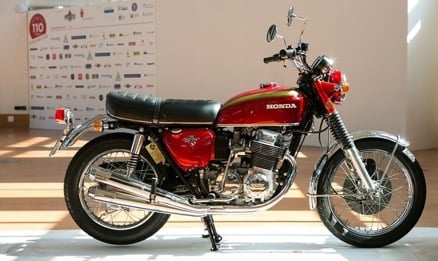
Most people can tell apart pre-1970s European and British machinery from later, usually Japanese, modern classics developed between 1970 and 1999. Most early classic bikes, including Norton, BSA, Triumph, Velocette, Royal Enfield, Matchless, and Ariel, were produced in Britain. Steel tube frames with rudimentary suspension and brakes are frequently utilized with single- or twin-cylinder air-cooled engines.
The bikes aren’t fast, but they have personality, and with modern upgrades to the electrics, valve gear, and ignition, they are much more dependable than the originals. Almost current performances of contemporary classics are possible. Amazingly, a “vintage” motorcycle, such as a 1999 Honda Fireblade or Yamaha R1, has about 150 horsepower and weighs under 200 kilograms. A 1996 Suzuki Bandit 1200 is a dependable, attractive daily bike that is simple to operate and reasonably priced to maintain, even if you don’t need a lot of speed.
Examples of Classic and Modern Classic Motorcycles
1999 Honda Fireblade, Yamaha R1, or anything pre-1970!
16# Electric Bikes
What lies in store for motorcycles in the future? Electric motorcycles are still in their infancy regarding how well they work and how useful they are. There are only a few niche manufacturers, and they cost a lot and don’t go very far. On this, the motorcycling community is evenly divided.
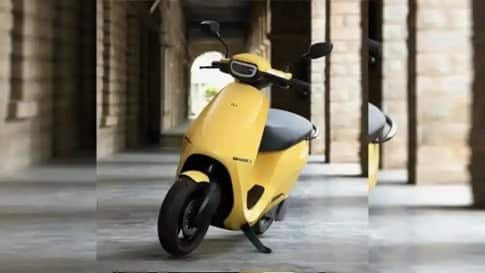
The Zero series is as close to a real alternative as current technology will let it be. It works well and looks good. The Alta off-road bike had an amazing performance in dirtbike racing. Another option for a quick journey across town that allows charging at both ends is the several businesses that produce tiny commuter bikes.
Examples of Electric Motorcycles
Harley-Davidson Livewire, Zero SR/F, Vespa Electrica
17# Enduro Bikes
Enduro bikes are built for milder dirt activity than full-fledged motocross bikes, but they’re still strong bikes. Since many enduro races go between segments on public highways, they frequently have lights and other road equipment. Most enduros are straightforward to register on the road. You won’t want to put too many miles on one, as the amenities are modest, and a highly tuned 450 single-cylinder engine would quickly wear out at highway speeds.
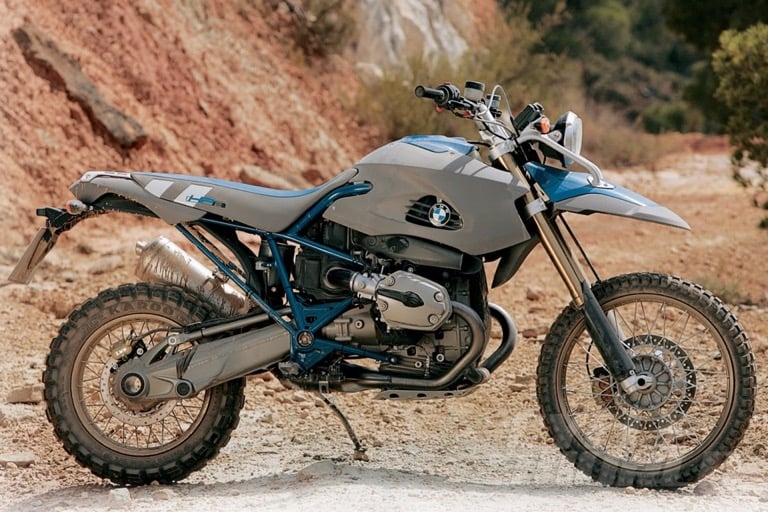
Even more so if you adjust your tires, wheels, brakes, and gears, a brief excursion on a sunny day is manageable. A supermoto, which is a blast to ride in the city and on twisting backroads, may be made from an enduro bike by adding a set of “road” wheels, sticky rubber, higher gearing, and a larger brake disc.
Examples of Enduro Motorcycles
Husqvarna 701 Enduro, KTM XC250
18# Motocross Bikes
If you’re serious about rough dirt riding, these motorcycles are what you should get. Most MX bikes can only be used off-road, on designated racetracks, or on private property. Single-cylinder, 2 or 4 stroke engines with high power outputs and certain class sizes are almost always used. These classes typically have 125, 250, 400, and 450 students each. These are fastened with bolts to robust frames that can take a beating. The frames take a lot of punishment from whoops, crashes, and high jumps exerting much power.
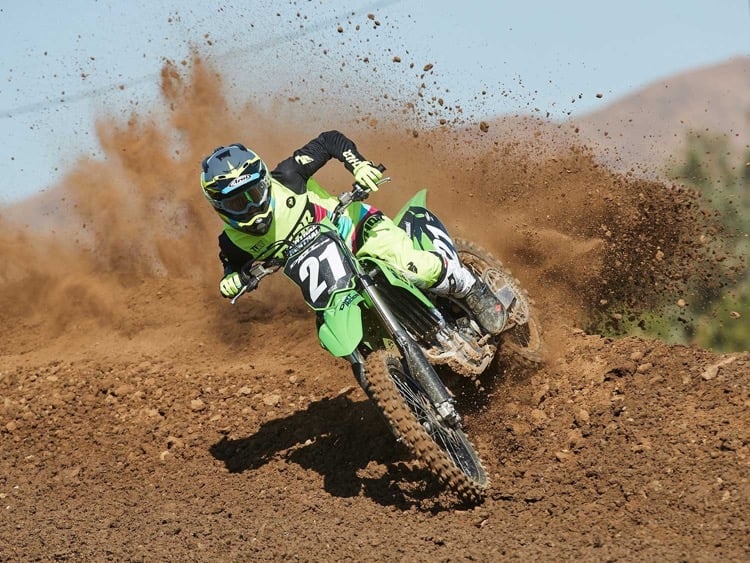
Suspension and swingarms are subjected to identical treatment and must be bomb-proof. That means super-thick fork legs, a strong aluminum swingarm, and the ability to swiftly and effectively strip, maintain, and rebuild suspension components to keep them up to spec. Few machines get treated this badly, and four-stroke MX engines in particular, need extra care to keep them from blowing up.
Parts have a ‘life’, and if you don’t replace a piston, valve, or con-rod at the appropriate frequency, it will usually fail, inflicting considerable damage to the remainder of the engine, which will be much more expensive to fix.
Examples of Motocross Bikes
KTM, Husqvarna, Kawasaki
19# Naked Bikes
The top-of-the-line sports bikes from last season make up around half of the naked bikes; these bikes are then “nakedized” by removing their fairings. In addition, less aggressive geometry, straighter handlebars, a single light cluster, the absence of a screen, and minor wiring pruning to showcase the engine are frequently made.
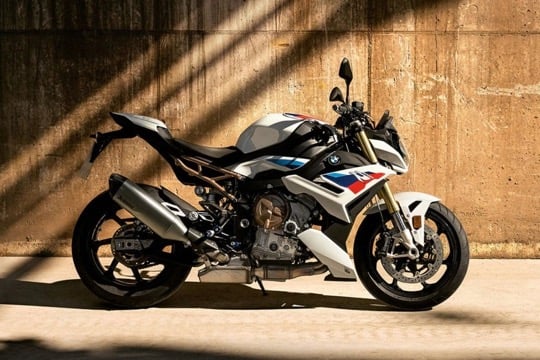
Sometimes, an older sports bike’s engine is used in order to save money. Muscle bikes, street fighters, and “hyper-naked” are terms used by BMW to describe the more powerful types. They are also known as “roadsters” or standard bikes.
Examples
The Suzuki GSX-R750 and GSX-S750 are linked similarly between the Suzuki R-125 and MT-125 at the bottom and the BMW S1000RR and S1000R at the top. Some bikes, like the Honda CB1000R, are a hybrid of contemporary naked bikes and contemporary bikes with a classic aesthetic. Because of their style, these bikes are referred to as “neo-retro”.
20# Scambler Bikes
The original scramblers were off-road competition bikes from the 1950s and 1960s. With road bike engines and chassis, more ground clearance, high-level exhausts, and knobby tires, these bikes were very different from modern MX bikes. On the other hand, a modern scrambler is more like a vintage roadster that has been rebuilt to appear to be something more capable off the paved road.
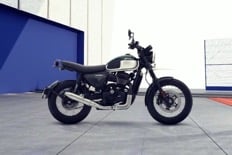
A few of the variants that BMW, Triumph, Ducati, and Yamaha produced did well. However, the majority of them are merely aesthetic exercises, so if you wanted to build anything more complex than a fire road or dirt track, you’d be better off going elsewhere. However, they are perfect for weekend backroad excursions or slick city rides!
Examples of Scrambler Motorcycles
Ducati Scrambler, Triumph Street Scrambler
21# Super Bikes
The most power comes from the one-liter motors in the superbike class, which can make more than 200bhp. The BMW S1000RR and Kawasaki ZX-10R, both producing over 210bhp, have the highest outputs. While this is going on, Aprilia and Ducati have taken things a step further by boosting the displacement of their Panigale V4 and RSV4 engines to 1100cc. They now have 10% more power and torque as a result.
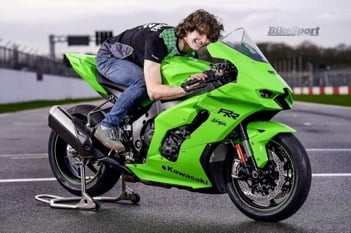
212 horsepower are produced by the powerful Panigale V4S. These incredibly powerful engines complement cutting-edge chassis components and electronic rider aids. Standard features include a complex traction control/ABS system, race-inspired brake calipers, race-inspired brake discs, and semi-active electronic suspension.
22# Streetfighter Bikes
The streetfighter bike class evolved naturally from the streets, which is somewhat suitable. In the 1980s, when fully-faired sportsbikes first appeared, many riders hopped on them and rode them as designed. After these plastic-covered bikes got into a few accidents, their owners were bound to find out how expensive it was to replace the bodywork panels. It was not unusual for a bike to be written off even when the engine and chassis were completely unharmed. This was because the bike’s plastic fairing was broken, and repairs would cost several thousand pounds, which was more than the bike was worth.
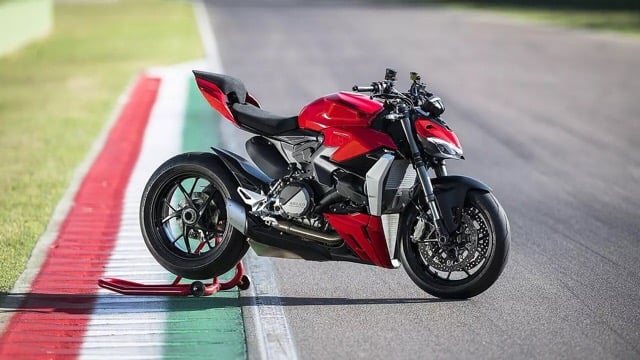
The bike’s owners then made every effort to get it back on the road and moving. The car was redone in the style of Mad Max, with basic headlights and turn signals instead of lights on the fairing and wide handlebars instead of clip-on race bars. It didn’t take long for people to start making streetfighters without even wrecking their sports bikes first, thanks to the power and control of a superbike in an unfaired, wide-barred configuration.
The modern hyper-naked class may have replaced the true streetfighter. Motorcycles like the Yamaha MT-10 and Aprilia Tuono are basically factory-built R1 and RSV4 superbikes without fairings. Based on the 848 and 1098 superbikes, Ducati also sold a streetfighter for a while.
Examples of Streetfighter Motorcycles
Yamaha MT-10, Aprilia Tuono, Ducati Streetfighter
23# Trikes (3-wheelers Bikes)
Three-wheeled bikes have a few options besides sidecars. The traditional trike is a home-built bike with two wheels at the back and a vintage air-cooled VW engine. Harley-Davidson offers factory-built trikes with its V-twin engines, custom rear suspension, and chassis if you want a ready-to-ride motorbike. Honda Gold Wing trikes are frequently converted because of their powerful engines and shaft drive, which make them the perfect choice for three-wheelers.
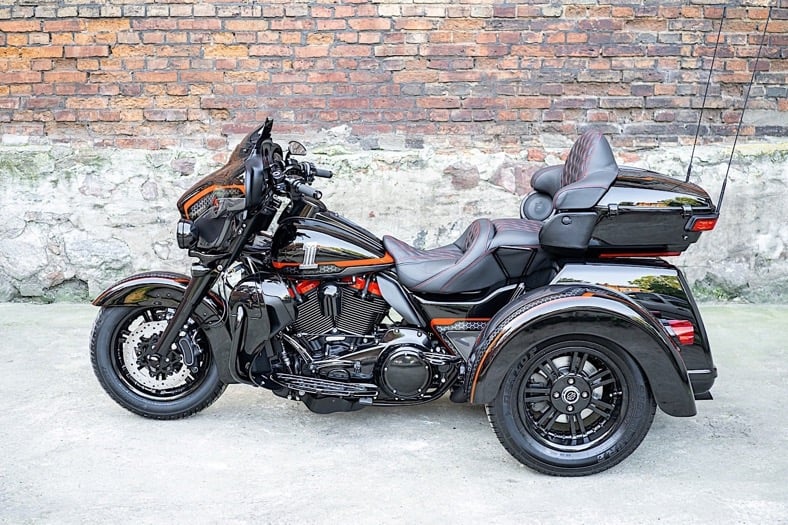
The other option is to ride a reverse trike, which involves doing so on both of your front wheels. This can be non-leading with vintage Morgan three-wheelers or with more contemporary three-wheelers like the Can-Am Spyder from Bombardier. New “leaning” reverse trikes are currently available on the market. The Piaggio 300 and 350cc MP3 and the Peugeot Metropolis 400 are maxi-scooters with tilting, two-wheel front ends, complicated locking connections, and controls. You can buy these as scooters or bikes.
24# 125 cc
The 125cc class is the most basic and inclusive one available here. It is the maximum capacity to which all rookie motorcycle riders in the United Kingdom and throughout Europe are restricted when they start riding at the age of 17. It is exclusively a statutory invention.
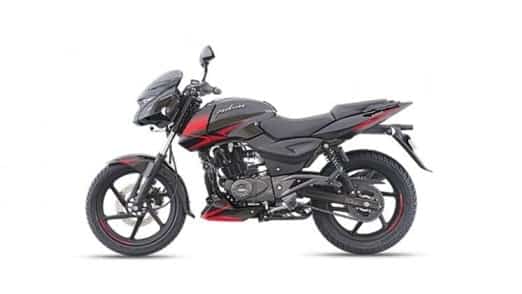
Since 1983, beginner riders have been prohibited from operating 250cc motorcycles with any kind of power limitations. The 1981 Transport Act changed the learner capacity restriction to 125cc and set a new power limit of 9kW in February 1983. (12bhp).
This category includes any motorcycle with a cubic capacity of less than 125cc and a peak power output of less than 15bhp. New motorcycles come in various styles, from scooters and affordable roadsters like the Honda PCX125 and Yamaha YS125 to mini-superbikes like the KTM RC125 and Yamaha R125 and high-end super-naked motorcycles like the Yamaha MT-125, Kawasaki Z125, or KTM 125 Duke.
Examples
Honda PCX125, Yamaha MT-125, KTM 125 Duke, Mutt Mongrel 125, Bullitt Hero 125.
25# Dual Sport Bikes
Dual Sports are made to be used however and wherever you like. They include road conveniences like lights and a horn but have harsher off-road suspension and possibly knobby off-road tires. The seat height is typically a little higher to accommodate the backroads and off-the-beaten-path routes that can be found on the backroads.
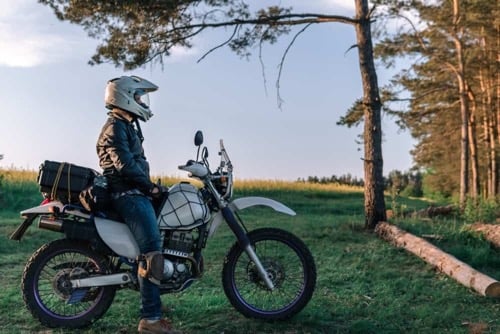
When you buy them from the dealer, they usually don’t have a lot of storage space, but you can add a variety of extra bags to make them hold enough supplies for a weekend camping trip. The KTM 1090 Adventure can handle any obstacle because it combines off-road prowess with a fashionable appearance and feel. Although it has a greater seat height, it isn’t particularly powerful, making it manageable for a weekend ride. It can also transport you on a protracted cruise. Make sure it has everything you’ll need to help you make some priceless memories.
Frequently asked questions (FAQs)
What exactly does BHP mean in relation to motorcycles?
What does rpm mean on a bike?
How many different motorcycle models are there?
What does CC stand for when it comes to motorcycles?
What are the three most important steps to riding a bike?
• Using a balance bike to balance and brake. Balance bikes are two-wheel bikes with no pedals and a low enough seat for the youngster to contact the ground flat-footed while seated.
• Using a balance bike to steer.
• Pedalling.

